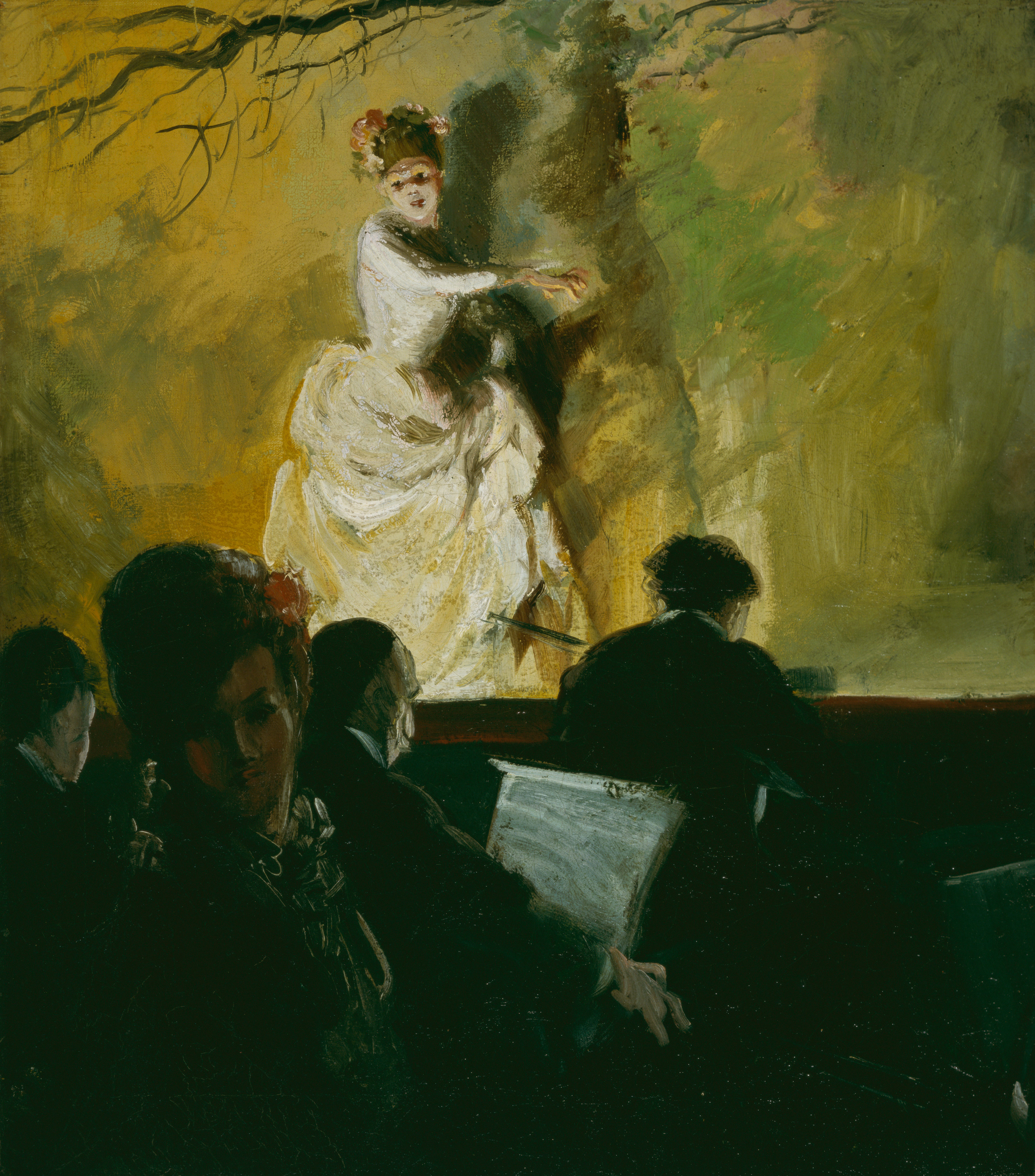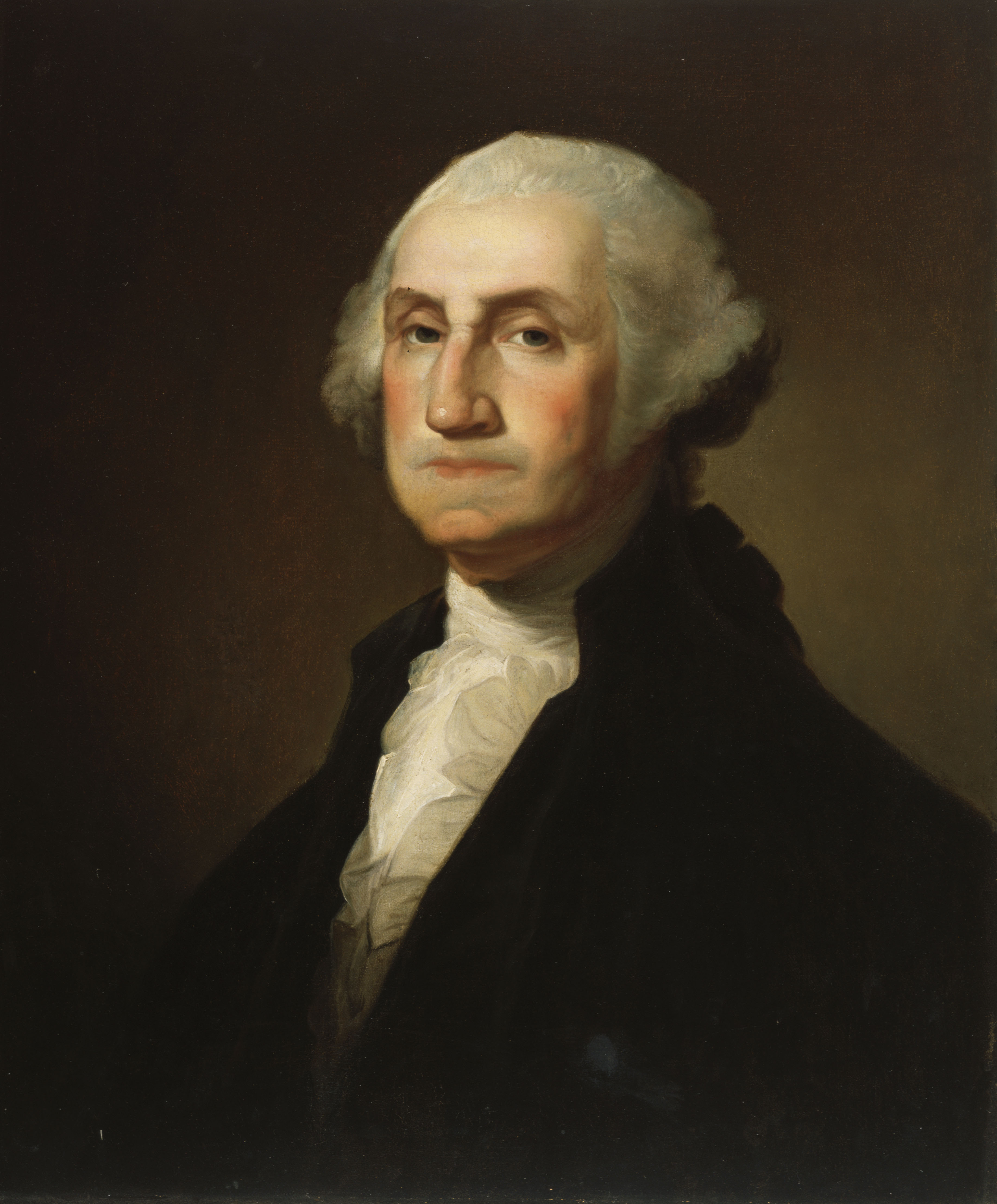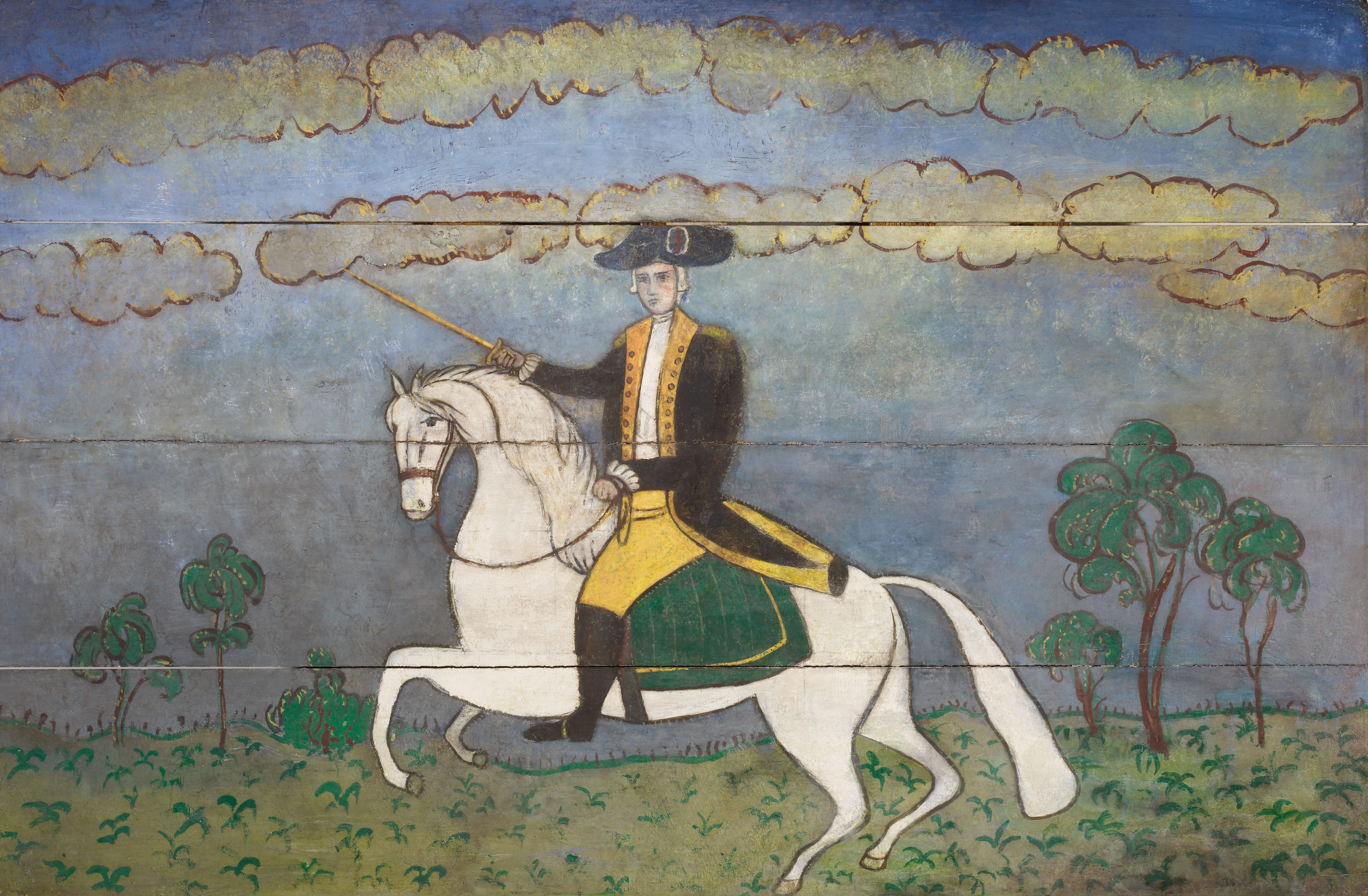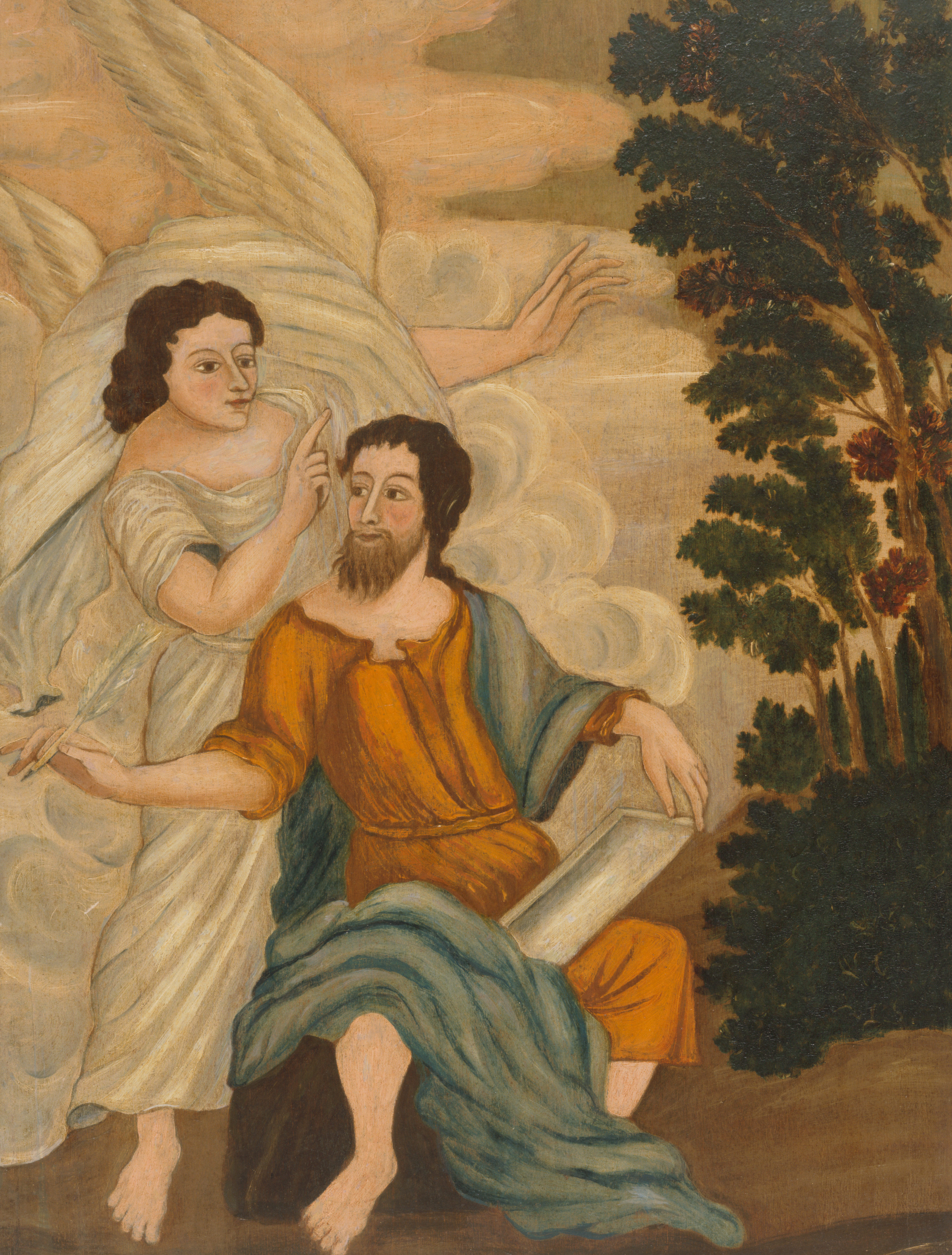Mother and Child
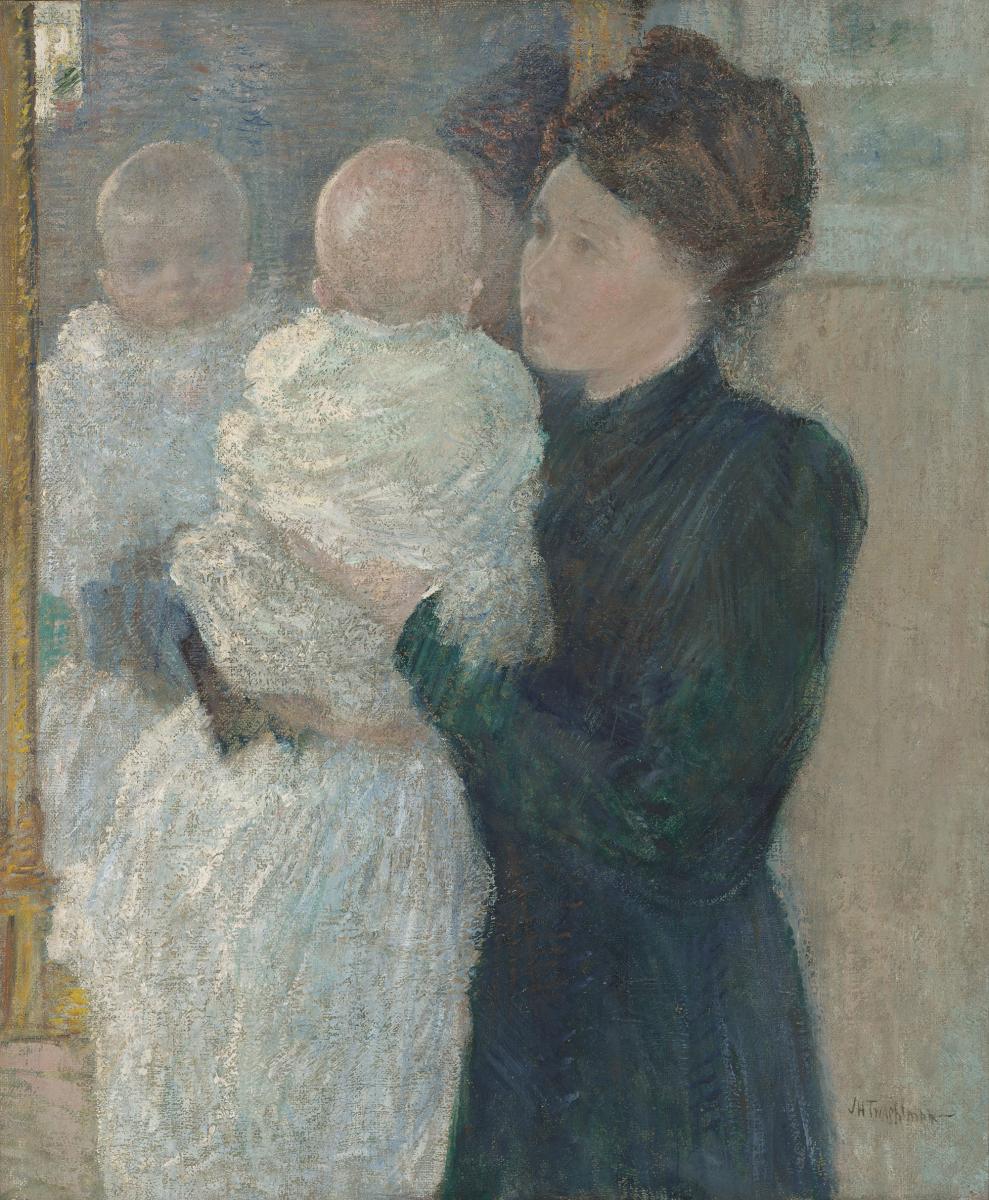
What does this painting reveal about motherhood?
A founding member of The Ten, Twachtman was one of the foremost American Impressionists of his era. In this highly personal domestic scene, the artist’s wife, Martha, holds their baby up to a mirror. She lovingly watches her child as he studies his reflection, though it is unclear whether he will react with pleasure or surprise. The painting also features another artwork hanging behind Martha on the right side of the canvas, locating this scene in the artist’s home.
